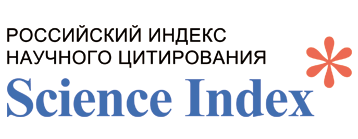SYNTHESIS AND ANTIBACTERIAL ACTIVITY OF N-(4-METHOXYPHENYL)ACETAMIDE AND N-PHENYLACETAMIDE DERIVATIVES
Keywords:
N-phenylacetamide, dithiocarbamates, thioanhydrides, fungicidal activity, bactericidal activityAbstract
Abstract. Introduction. Particular attention in the cultivation of industrial and agricultural crops is paid to the fight against pathogenic fungi, which not only lead to significant yield losses, but they are also dangerous to humans. The aim of this work is the synthesis of biologically active compounds in the series of aromatic dithiocarbamic acids based on N-(4-methoxyphenyl)acetamide and N-phenylacetamide and the study of their antifungal and antibacterial activities. Results and discussion. Biologically active aromatic sodium dithiocarbamates were synthesized by the reaction of amines (N-(4-methoxyphenyl)acetamide and N-phenylacetamide) with carbon disulfide in the presence of NaOH in ethanol at a temperature of 25°C in 78 and 85% yields. Thioanhydrides were synthesized by the acylation of sodium acetyl(4-methoxyphenyl)carbamodithioate and sodium acetyl(phenyl)carbamodithioate with acid chlorides (benzoic, 3,4-dimethoxybenzoic, 2-bromobenzoic, and 4-nitrobenzoic) in chloroform at a temperature of 25°C. The corresponding derivatives of aromatic thioanhydrides of dithiocarbamic acids were obtained in 49-88% yields. The structure of the synthesized compounds was established on the basis of elemental analysis data, IR spectra, 1Н and 13С NMR spectroscopy. Antifungal and bactericidal properties of the synthesized compounds were studied against phytopathogenic fungi and Fusarium oxysporum and Pectobacterium carotovorum bacteria. Conclusion. According to the test results, it was revealed that sodium acetyl(4-methoxyphenyl)carbamodithioate at a concentration of 0.4% has a high fungicidal activity and completely inhibits the growth of the Fusarium oxysporum phytopathogen. The maximum zone of inhibition (18 mm) of Pectobacterium carotovorum bacteria was at a concentration of 0.4%.

















